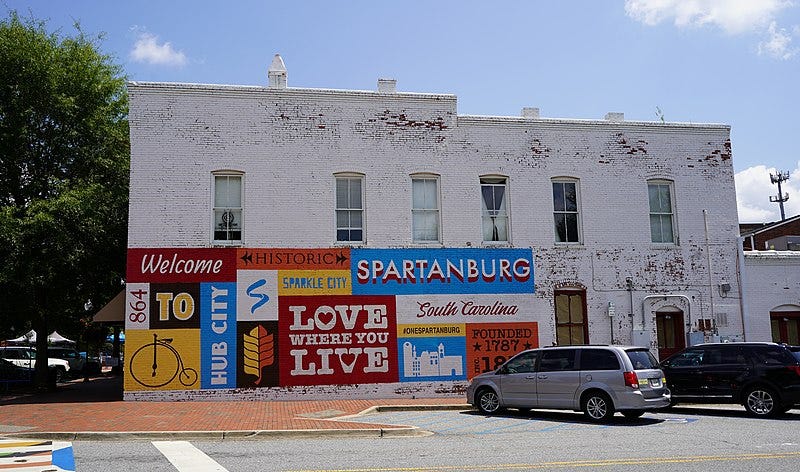When traditional economic development strategies don’t work
Small cities and towns tend to need some magic when it comes to revitalization

Happy Finance Friday! Public Money Pod fans may remember an episode we had a while back with Mark Scott, whom I once dubbed that “fix-it city manager” (a nickname that apparently stuck). After spending more than 20 years working for the city of Beverly Hills, 14 of them as city manager, Mark and his willing wife set off for Spartanburg, S.C., a former mill town that had been devastated by the loss of the textile industry. That marked the start of his fix-it journey that took him to seven more cities, including San Bernardino, Calif., after it entered bankruptcy.
But Spartanburg always stuck with Mark, in part because of that city’s turnaround story. In our conversations about the city, a couple things Mark said reminded me of my own adopted small town in Maryland (which is not downtrodden but definitely in need of some downtown life) and the ongoing plight in Chester, Pennsylvania. In some places, the go-to revitalization formula doesn’t work on its own.
On the go? Paid subscribers can access the podcast version of this newsletter! Learn more here.
Two crucial elements for Spartanburg’s turnaround
Scott arrived in Spartanburg in 2002 and describes his time there as “the most interesting part of my career.” The economy there had been rocked by loss of the textile industry and was starting to rebuild around a new BMW manufacturing facility but it needed more than that to incite organic growth. A couple things about the process he described stood out:
The effort included addressing generations of racially-driven neglect via textile mill economics, Jim Crow, and failed urban renewal. So often this conversation comes after the economic turnaround is well underway. But that only worsens existing inequities and makes the healing process so much harder. “I got to work with great leaders, white and Black, who shared goals,” Scott said.
Over 15 years, those efforts included:
Renovation of nearly every public housing development in town,
The first new grocery store and pharmacy in South Spartanburg since the 1960s,
Two new community recreation centers serving poorer neighborhoods,
Restoring and reopening the historically black community park in South Spartanburg that had been abandoned for decades.
Second, a few benefactors helped create the financial base for economic development. More than one-quarter of residents at the time were living below the poverty line (today, 24% do) and Spartanburg’s median income is well below the state average. Unlike Scott’s experience in California, the preference in this part of South Carolina was to look to private contributions (personal and corporate) rather than rely solely on government funding to kickstart development.
For example, the city’s downtown Central Park and amphitheater were funded entirely by two area residents. “We were blessed to have two billionaires and others with wealth and they chose to support redevelopment to help with the 26% of our population that was below poverty level,” Scott added via email. “Most successful city revitalizations start with local billionaires,” he half-joked. “Can’t always replicate that!”
Why these two things matter: Spartanburg is a small city that couldn’t pull much from its local resources. This is true of thousands of cities like it across the country with tired Main Streets and a local tax base that’s too small to pay for jumpstarting revitalization. Without local benefactors who took an interest, the turnaround would have been much slower. Plus, by addressing the city’s history of structural racism at the start, it sent the message that everyone was going to benefit from the planned investments.
“I was in the middle of a widespread community initiative that had very little ego, but huge support—and pride,” said Scott. “And that has only grown in the years since I returned to California.”
When the classic economic development formula doesn’t work
It’s a sad truth that racially diverse and majority-Black communities that become distressed have an even harder time making a comeback because of structural racism. Either businesses won’t be wooed by tax breaks because their modeling says they still won’t make money, or banks make it too expensive to finance a project there.
Keep reading with a 7-day free trial
Subscribe to Long Story Short to keep reading this post and get 7 days of free access to the full post archives.



